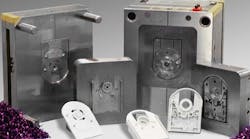Diversified Plastics, Inc.
Latest in Research and Development
Latest in Research and Development
Every mold transfer is a challenge. Transferring tools from one plastic injection molding company to a new supplier, with uninterrupted production, requires up-front planning and effective communication for a successful outcome.
Changing vendors may be necessary for a variety of reasons. When a company completes a merger or acquisition, additional supply chains are inherited. Consolidation of the supplier base may be necessary to lower cost, reduce administration or improve logistics. A supplier could have undergone recent changes, such as a plant closure. There may be dissatisfaction with a current supplier as a result of cost increases, service or quality deterioration, or stagnant technology growth.
Whatever the reason, minimizing risk or impact on production and having a streamlined process improves the likelihood of tool transfer success.
Original Equipment Manufacturer (OEM) Preparation
When switching suppliers, time is of the essence. The process starts with establishment of a transfer management team to define the scope of the project, develop a road map for success and collect necessary information. That team may include purchasing, quality, engineering, management and others.
After the team is established, conduct an onsite assessment of the manufacturing process at the current vendor’s facility. This may be the only opportunity to gather the wealth of information that often hasn’t been properly documented.
In addition to the information documented at the on-site visit, it’s beneficial to provide as much of the information and items listed here as possible to the new supplier.
Look at the backlog to determine how much supply you will need while the transfer tooling process is being completed, samples are approved, and production can begin. Typically, a threemonths’ supply is required. This is dependent on several factors, such as the number of parts being transferred, complexity of the parts, tool quality and material delivery dates. By providing sufficient information, your new supplier can assist you with a time frame estimate.
Supplier Tool Transfer Process
Request a documented tool transfer protocol from the new plastic injection molding company. The supplier will also appoint a tool transfer team, which often includes knowledgeable individuals from sales, customer service, engineering, tooling, quality, processing and others.
Request a documented tool transfer protocol from the new plastic injection molding company. A typical tool transfer process includes the following steps:
Identifying and repairing or modifying tooling avoids time wasted sampling a mold only to find out that there are issues. After any needed modifications or repairs are completed, the mold is ready to sample. Once samples are produced, the first-article inspection report (FAIR) is prepared and submitted to the customer for approval.


